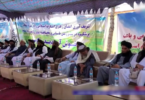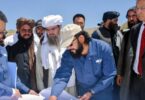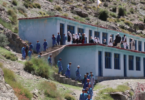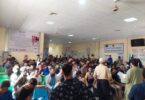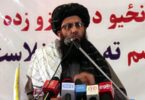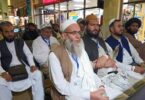Samuel King
KABUL: Mere hours into his first day on the job in Afghanistan, a 96th Medical Group doctor was slicing through an accident victim’s chest cavity, then opening the hole with his finger to insert a chest tube.
This was not a procedure Air Force Capt. (Dr.) Shawn Bishop has performed before. He said he thought he’d just watch and learn, but when the trauma physician turned to him and said “you’re a doctor right? Then get over there and get it done,” he did just that. The tube helped relieve pressure in the patient’s chest caused by a collapsed lung. “I jumped right in,” said Bishop, a prior enlisted Marine turned Air Force physician. “This experience set me up for success for the remainder of my deployment. I kept this same attitude, the best I could, so I was generally the doc who would do many of the procedures. I would volunteer and learn new things.”
Bishop would perform three more chest tube procedures during his six-month position as a physician at the Bagram Air Base inpatient care unit in 2020. The assignment is a rarity within the more than 50 deployments family medicine doctors support annually, according to Col. (Dr.) Michelle Anton, the 96th Healthcare Operations Squadron commander. Upon his arrival in May, the COVID-19 pandemic was rampant worldwide, but the base had no cases at the time.
As symptomatic patients began to show up, Bishop and his team created the policies and procedures the hospital would use to battle the virus. “The numbers were scary in that we projected worst-case outcomes where we would need four to five times as many beds as we currently had,” said the 35-year-old Iowa native.
The medical specialists established a field hospital exclusively for COVID-19 patients, so they could be separated from the sick and trauma patients. The field hospital was basically a large tent that required beds, supplies, oxygen and communications, all of which had to be procured and set up.
“Even though it was located next to the hospital and all its capabilities, it still felt like we were practicing in an austere environment,” Bishop said. “You take so many things for granted when working in a hardened, fully operational hospital.” One night, the staff and patients discovered a significant problem with the tent hospital when the incoming fire siren blared out its warning, signaling everyone to get into a bunker or hardened facility.
The staff moved four COVID-19 patients, some very ill and unable to walk, out of the tent and into a bunker as quickly as possible. “It was dramatic. There were no injuries and nothing landed near us in the end,” Bishop said.. “It was a new issue we had to deal with. We hadn’t really thought about [it] to that point.”
During his deployment, Bishop managed 270 patients, more than 90 were COVID-19 related. Bishop and his team of around 30 people witnessed the number of COVID-19 patients rise in his first three months. Many of those COVID-19 patients were placed on breathing ventilators. Bishop had never placed a patient on a ventilator outside of the operating room in medical school or in residency, so it was another new experience for the doctor. By the end of his deployment, his team managed about 40 intubated patients, 14 who had COVID-19.
“This is generally not something a family med doc is expected to do as a routine duty, but it is something I got to do and manage over there,” said Bishop, who joined the Air Force as an officer in 2012, after a four-year break from the Marines. “This procedure is often the last resort side of things, when other changes and interventions are not working. I believe in several cases for us, it prevented death. It worked wonders.” The last three months were filled with mostly trauma patients with injuries from gunshots, falls, crashes and improvised explosive devices.
“That transition was actually the hardest,” said Bishop, who joined the military after 9/11. “You get used to mostly managing one thing, get comfortable, in a groove, then it changes.” He said he felt the most overwhelmed during those situations. He went on to describe one particular day when a full trauma, meaning more than four patients, were brought into the hospital. He was in charge of one of the patients and described the whole situation as fast-paced — with five trauma patients being worked on by five staff members in an overheated room.
“I trained for a situation like this, but I felt I was out of my realm of expertise, definitely outside my comfort zone,” said Bishop, who leaned heavily on his experienced nurse and focused on his training. “Falling back on things we are taught over and over worked well, which is why we practice hard, so when these situations come up, training can take over.” Bishop said he found strength and positivity from his family through phone calls and FaceTimes during those low moments. His team of doctors, nurses and technicians also provided a strong connection.
“We worked to keep it a positive environment, so when one person might be feeling down, we lifted each other up,” he said. The doctor, who graduated from his residency training in 2019, said the six-month deployment made him dramatically better, both as a doctor and as leader. “It taught me [that] I need to step up when I have the ability to, because sometimes there isn’t anyone else,” Bishop said. “When you are forced into a situation where folks are looking to you for answers, you either grow into it or flounder. I feel like I grew into it.”

